#Gerald Minelli
Text
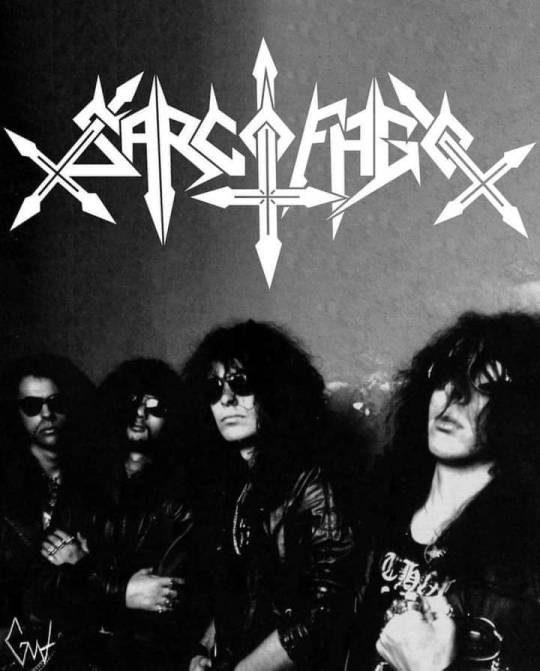
𝔖𝔞𝔯𝔠ó𝔣𝔞𝔤𝔬
#Sarcófago#Genre:Black/Thrash/Death Metal#Themes:Death#Lust#Alcohol#Satan#Anti-Christianity#Blasphemy#Depression#Suicide#Brasil#the laws of scourge era#the laws of scourge#Wagner Lamounier#Gerald Minelli#Fábio Jhasko#Lucio Olliver
32 notes
·
View notes
Text

youtube
SARCÓFAGO
The Laws Of Scourge (1991)
Cogumelo Records / Under One Flag
Brazil 🇧🇷
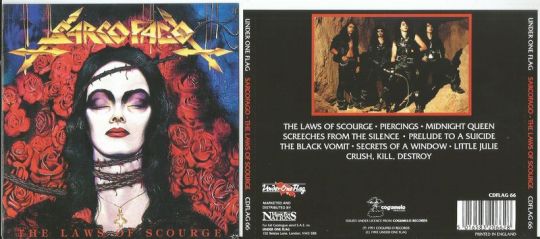
The Laws of Scourge is the second studio album by the Brazilian extreme metal band Sarcófago. It was on this album that the band's lyrical content shifted from Satanism to more realistic subject matter; "Midnight Queen" is about a prostitute, while "Screeches from the Silence" is about living life in a care-free manner. After the lo-fiblack/thrash metal style of I.N.R.I., The Laws of Scourge marks a change in musical style, with the band playing clearer and more proficient death/thrash metal. This was also the last full-length record to feature a human drummer, as from Hate onwards, the band would use a drum machine.
Sarcófago
Wagner Lamounier – lead vocals, rhythm guitar
Fábio Jhasko – lead guitar
Gerald Minelli – backing vocals, acoustic guitar, bass guitar
Lucio Oliver – drums, percussion
Additional Musicians
Eugênio "Dead Zone" – keyboards
Claudio David – backing vocals (on "Midnight Queen", "Screeches from the Silence" and "Crush, Kill, Destroy")
Production
Arranged and produced by Sarcófago
Recorded and mixed by Gauguin and Sarcófago
Cover art
Kelson Frost
#sarcófago#the laws of scourge#1991#congumelo records#under one flag#brazil#🇧🇷#death#black#thrash#metal#Youtube
4 notes
·
View notes
Text









Rare Celebrity Photos
Actress sisters Joan Fontaine and Olivia de Havilland
Leading Men of Hollywood
Rock Hudson, Cary Grant, Marlon Brando and Gregory Peck.
Hedy Lamarr preparing for a photo shoot in 1940.
Orson Welles and Rita Hayworth 1945
Betty Grable Getting her hair done
1948: Judy Garland and Liza Minnelli
Gerald Mayer,Dorothy Dandridge and Harry Belafonte on the set of
Bright Road 1953
Grace Kelly and Alfred Hitchcock 1955
Richard Burton, Eddie Fisher and Elizabeth Taylor 1961
#olivia de havilland#Joan Fontaine#rock hudson#cary grant#marlon brando#Gregory Peck#Hedy lamarr#dorothy dandridge#harry belafonte#Gerald Mayer#grace kelly#alfred hitchcock#Eddie Fisher#richard burton#elizabeth taylor#judy garland#liza minelli#actress#actor#hollywood
123 notes
·
View notes
Text
Sarcofago- Brazil
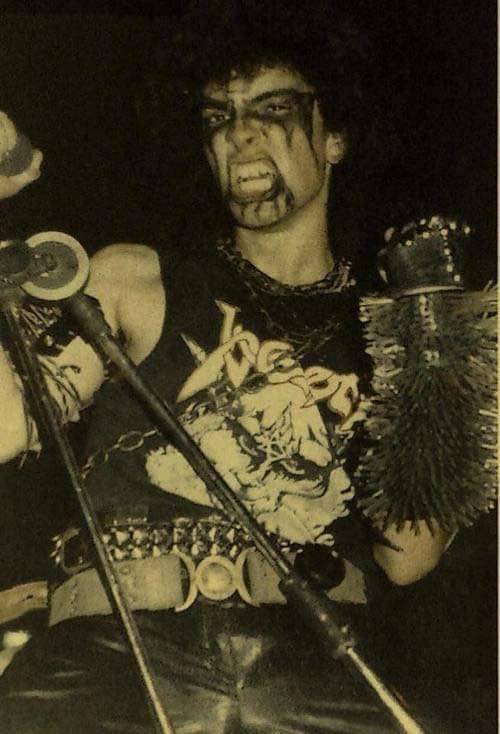
Sarcofago was a Brazilian extreme metal band founded in 1985, and is considered one of the most highly influential metal bands of all time.
Founded in Belo Horizante by Wagner Lamounier and Geraldo Minelli, the group sought to create the most extreme music that the world had ever encountered, and drew musical inspiration from other extreme bands like Slayer and Celtic Frost, along with groups from the Finnish hardcore punk scene.
Sarcofago made their first appearance on a 1986 split album titled "Warfare Noise I," contributing the tracks "The Black Vomit," "Satanas, " and "Recrucify." At this time, the band consisted of "Antichrist," (Lamounier, vocals, ex Sepultura, ) "Butcher," (guitars,) "Incubus," (Minelli, bass) and "Leprous," (Armando Sampaio, drums.)
The groups' extreme lyrical content and Satanic imagery drew them a sizeable amount of attention, and shocked the country with their openly blasphemous lyrics.
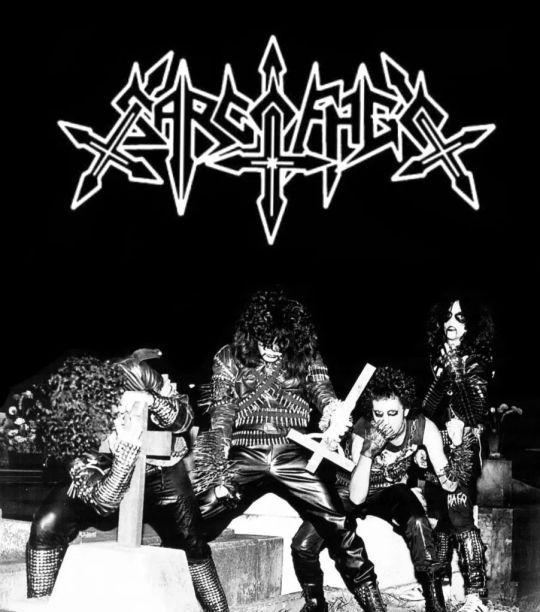
In 1987, the band released their debut album "INRI" with drummer D.D. Crazy, who would become widely renowned for his excessive use of blast beats. This album is highly regarded as the first official representation of black metal, both in sound and imagery. Sarcofago's use of bullet belts and corpsepaint influenced many other bands, most notably in the Norwegian scene, (much to Lamounier's confusion.) Soundwise, Sarcofago is considered the epitome of first wave black metal, and is highly influential to the war metal scene.This album alone is considered highly influential on the black metal genre, and is considered a huge milestone in the evolution of extreme metal.
While the release of this album reached legendary status, Lamounier himself was displeased with it, citing inner conflict and the recording quality for his dissatisfaction.
Sarcofago briefly disbanded after the album's release, with Wagner going off to study economics. Meanwhile, Butcher and D.D. Crazy left the band, with D.D. going on to contribute drums for Sextrash's 1990 debut, "Sexual Carnage."
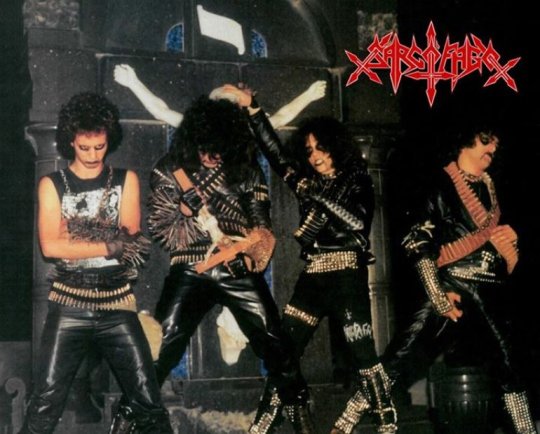
In 1990 Sarcofago returned to release their first EP, "Rotting," this time with session drummer "Joker" joining the lineup.
This record differed drastically from the legendary INRI album, replacing the hyper speed black metal with influences of cross over thrash.
The founding members would also undergo a change in aliases upon release, becoming "Wagner Antichrist" and "Gerald Incubus." They also abandoned the use of spikes in their stage appearances, as they were difficult to perform in. Additionally, Wagner would pick up the guitar for this record, and contributed many of the album's riffs.
While Rotted was the first Sarcofago release to boast international distribution, the band found conflict with Maze Records from the U.S., when they released a censored version of the album and placed a sticker (without agreement from the band,) that read:
"Featuring the Original Lead Singer of Sepultura."
Sarcofago sued them.
The band would release their second album, "The Laws of Scourge" in 1991. This record was another radical shift in Sarcofago's musical sound, and is considered one of the first technical death metal releases in the history of Metal. This new sound was partly influenced by the band's new members, "Jhasko" (guitars) and Lucio Oliver (drums.) The album would become Sarcofago's best selling record, and resulted in their most robust touring schedule in their entire career.
The band would release a third album in 1994 titled "Hate." This album would cause controversy over the band's use of a drum machine, though Lamounier had no respite with its use.
At this time, the band also cut their hair short in protest of the grunge music scene that was taking the world by storm. Wagner stated that they had no issues with bands like Nirvana or Pearl Jam, but that their defiance was directed towards "jumping the. Bandwagon," or trends, which they believed stripped people down of their intelligence through massification.
Sarcofago would release a compilation CD in 1996, which included rare backstage pictures and demo versions of their early song.
The band would release their fourth and final album in 1997, titled "The Worst." This record saw a considerable change in tempo compared to it's speed infused predecessor.
Around 2000, Sarcofago released another EP called "Crust," and was supposed to serve as a preview for their next album. However, the band split up before recording.
While the band had parted ways, Geraldo Incubus and Cogumelo Records would collaborate on a comeback show in celebration of Warfare Noise's 20th anniversary. The lineup for the event would feature Minelli, Jhasko, Joker, and an old time friend named Juarez "Tibanha" to cover vocals. Wagner himself did not participate due to his disinterest in performing professionally. The event took place in 2006 at Belo Horizonte, and was recorded.
The last appearance of Sarcofago would be in 2007, when they played alongside Possessed for the Black Shadows fest in Santiago, Chile.
In 2009, Sarcofago was rumored to reunite, and make appearances at well known music festivals like Wacken and perform in various cities like New York, Los Angeles and Tokyo. Wagner exposed these rumors as false.
The band is still split up, having been inactive since 2007. There is one final compilation released in 2015, titled "Die... Hard."
Wagner now works as an economics professor, and has a crust punk side project titled "Commando Kaos."
youtube
#satan#satanist#satanic#black metal#extreme metal#death metal#thrash metal#speed metal#war metal#darkthrone#fenriz#possessed#watain#corpsepaint#deathcore#technical death metal#metalcore#underground#undergroundmetal#impaled nazarene#dead mayhem#beherit#music history#black metal girl#metalgirl#alt girl#blasphemy#euronymous#trve norwegian black metal#trve kvlt
233 notes
·
View notes
Photo

Reposted from @carolina_indica Terça-feira, 10/08, às 20:30h pelo canal Mercado da Arte, o Programa Carolina Indica entrevistará, ao vivo, o baixista da Sarcófago: Geraldo Minelli, o Gerald "Incubus" Vamos conversar sobre a sua trajetória, a banda Sarcófago e a sua nova banda ENAO. Participe! Vou ler ao vivo as suas perguntas e mensagens no chat!!! Se inscreva no Mercado da Arte e ative o lembrete e compartilhe com os amigos!!! Sigam o @[email protected] Programa Carolina Indica Apresentação: @carolina_indica Artista Convidado: Geraldo Minelli Carolina Indica veste: @lojarockroyaltty Maquiagem: @marciamakeupcastro Produção: 🎬 @andrewdavisoficial 📽 @fotografoluizfelipe 💻 @ricardo_praca Realização: @mercadodaartetv #carolina_indica #carolinaindica #mercadodaarte #mercadodaartetv #programacarolinaindica #geraldominelli #sarcofago #deathmetal #blackmetal #banda #fortaleza #programa #entrevista #incubus #fortalezaceara #ceará #Brasil @radio_baixada_santista #música #bandaindependente #music #musica #som #drums #cerveja #bass #rockroyaltty #metal #geraldincubus #baixista (em Radio Baixada Santista) https://www.instagram.com/p/CSZHTjAACTL/?utm_medium=tumblr
#carolina_indica#carolinaindica#mercadodaarte#mercadodaartetv#programacarolinaindica#geraldominelli#sarcofago#deathmetal#blackmetal#banda#fortaleza#programa#entrevista#incubus#fortalezaceara#ceará#brasil#música#bandaindependente#music#musica#som#drums#cerveja#bass#rockroyaltty#metal#geraldincubus#baixista
0 notes
Text
New top story from Time: The True Story Behind the Movie Judy
In 1968, Judy Garland took on a five-week run of performances at London’s Talk of the Town cabaret club. This run of shows would turn out to be among the renowned performer’s last; she died of an accidental overdose the following year, at 47. The new film Judy, directed by Rupert Goold and starring Renée Zellweger as the eponymous superstar, focuses on this period in Garland’s life. Her career, by this point, had already spanned more than four decades, including her breakthrough role as Dorothy in 1939’s The Wizard of Oz.
But while Garland became an international icon of stage and screen, she also endured several struggles in her personal life, including a reliance on drugs, a string of marriages that ended in heartbreak and challenges with her mental health. As journalist Anne Helen Petersen, author of Scandals of Classic Hollywood: Sex, Deviance and Drama from the Golden Age of American Cinema, writes: “Garland was the first public victim of stardom, and certainly not the last.”
Here’s the true story behind the movie Judy, and the highs and lows of Garland’s life in and out of the spotlight.
She became a child star with MGM, but her success largely robbed her of a childhood
Born Frances Ethel Gumm in Grand Rapids, Minn., in 1922, Garland came from a showbiz family. She was already performing by the age of four, and at 7 she joined the successful singing-and-dancing act her older sisters had cultivated — all at the insistence of their mother, Ethel. The family moved to California in 1926 in search of greater fame for the Gumm sisters, who had, by this time, been reinvented as the Garlands.
It was at 13 that a young Judy would commit to a contract with MGM, one of the world’s biggest film studios. According to Hollywood legend, studio boss Louis B. Mayer signed her on the spot without a screen test. These early MGM days saw the beginning of Garland’s lifelong struggles with addiction, body image and mental health, largely fueled by the studio’s determination to mold her into a profitable box-office star. These difficult times are depicted in flashbacks in the movie; in one, Judy is made to celebrate her 16th birthday two months early, because that’s the only time that will work with her schedule, and she’s not allowed to go anywhere near her cake.
Unlike other glamorous actors of the time, like Lana Turner, Garland was marketed as more of an “ugly duckling,” according to Petersen. Her on-screen storylines and frequent partnership with fellow teen actor Mickey Rooney would often reflect this status, with Garland’s girl-next-door character harboring some kind of unrequited crush on Rooney’s all-American boy. “She didn’t look like the rest of those MGM stars…she becomes this kind of avatar for the rejected, not sexy enough, not pretty enough person,” said Petersen on a 2014 episode of film historian Karina Longworth’s podcast You Must Remember This.
Hulton Archive—Getty ImagesMickey Rooney and Judy Garland in a promotional portrait for director George B. Seitz’s film, ‘Love Finds Andy Hardy,’ circa 1938
It was widely reported that MGM also used drugs to modulate young performers on set, as depicted in Judy, plying its young actors with “pep pills,” otherwise known as amphetamines, to power them through the exhausting demands of shooting schedules, as well as “downers,” or barbiturates, to force them to get enough sleep. The reliance on drugs, as well as the constant pressure and comments about Garland’s appearance (Louis B. Mayer reportedly nicknamed her “my little hunchback”), led to Garland’s unhealthy relationship with her weight.
In the film, she is photographed sharing a milkshake with Rooney, but she’s not allowed to eat the food on the table between them despite expressing her hunger. Indeed, tabloid gossip magazines reported at the time that studio minders at MGM, as well as Louis B. Mayer himself, insisted that she “reduce.” One widely-circulated anecdote tells of Garland attempting to order a normal lunch at the studio canteen, only to be brought a bowl of soup and a plate of lunch by staff. “My life was a combination of absolute chaos and absolute solitude,” Garland later said, reflecting on her unusual, and troubled, adolescence.
One biography of Garland also alleged that she was sexually harassed by Mayer, starting around the time when The Wizard of Oz was released, when Garland was 16. Using notes from a partial memoir written by Garland herself, former TIME writer Gerald Clarke writes in Get Happy: The Life of Judy Garland that “between the ages of sixteen and twenty, Judy herself was to be approached for sex — and approached again and again,” by Mayer himself and other studio executives.
Garland was married five times
The first of Garland’s five marriages was at age 19, to composer David Rose. Her second was to director Vincent Minnelli in 1945, after he directed her in Meet Me in St. Louis the previous year. The early 1950s brought much change for Garland — she would separate from Minnelli and negotiate a release from her contract at MGM, where her career had been marked by suspensions, publicized suicide attempts and struggles with drugs. She would also meet Sidney Luft, “a somewhat questionable man-about-town with a questionable past,” according to Petersen.
Luft (portrayed in the movie by Rufus Sewell) would become Garland’s manager, engineering her return to the stage and her heralded comeback in 1954’s A Star Is Born, for which Garland received an Academy Award nomination for Best Actress. The pair would separate after 11 years of marriage in 1963. At their divorce proceedings in 1965, Garland accused Luft of domestic abuse and dependence on alcohol, eventually winning custody of their two children Lorna and Joey. By the time of the film’s events, Garland is on hard times financially and must leave her children in order to earn money in London.
After a short-lived marriage to American actor Mark Herron in 1965, Garland met nightclub manager Mickey Deans, portrayed in Judy by Finn Wittrock. In the movie, the pair meets at a party. Deans woos Garland, surprising her in London by hiding under a room-service tray and enjoying a brief romance which quickly turns sour, with Deans trying to make a buck off of having successfully gained entry into her orbit.
In real life, they met when Deans, 12 years Garland’s junior, delivered drugs to her hotel in New York in 1966, and married three years later in London. Deans and Garland’s relationship was reportedly fraught; anecdotes from the time suggested that during her performances in London, he forced her to perform despite her being too unwell to do so. As Judy Garland tribute artist Peter Mac writes, Garland’s daughter Lorna Luft recalled sharing a limousine with Deans after her mother’s funeral in 1969. “He insisted at stopping at a Manhattan office and it became clear to Lorna that he was striking his book deal only hours after her Mother’s services,” writes Mac. Deans’ book, Weep No More, My Lady: The Best Selling Story of Judy Garland, was published in 1972.

Evening Standard—Getty ImagesJudy Garland and Mickey Deans cutting their wedding cake, London, UK, March 15, 1969.
She had three children
One scene in the film — the same party at which Garland and Deans meet — shows a light and breezy interaction between Garland and her young adult daughter, Liza Minnelli (Gemma-Leah Devereux). Liza Minnelli is Garland’s only child with her second husband Vincent Minnelli; Garland also had a son, Joey, and a daughter, Lorna, with third husband Sidney Luft. The comparisons between Minnelli and Garland started from an early age. In 1959, when she was 12, she was described by TIME as “strikingly close to being a doe-eyed, wonder-struck replica of her mother.” The pair were close, performing onstage together several times during Garland’s lifetime.
Minelli recalled in a 1970 TIME profile that she went to 14 different schools, her childhood marked by moving from one house to another. “That was probably because Mama was so broke and maybe she owed money to landlords,” she told TIME. She said that she had “a swell time growing up,” and that although there were some hard times financially, she enjoyed her childhood in the company of film stars and moguls of the Hollywood industry through both her mother and father’s connections.

Bettmann—Bettmann ArchiveJudy Garland with her husband, director Vincente Minnelli, and their daughter Liza Minnelli.
As the eldest child, Minelli also took care of her mother when she was struggling with drugs, alcohol and her mental health. As TIME reported in 1972 in an article about Minnelli’s life, a young Liza would try to talk her mother out of her depressive episodes. “Saving Judy became one of her chores, like washing the dishes or sweeping the kitchen floor. Once a week, she and Lorna would sit down and empty out three quarters of Judy’s sleeping capsules and refill them with sugar,” TIME reported, depicting a kind of role reversal between parent and children. Both daughters would follow in their mother’s footsteps in show business, with Minnelli winning an Oscar for her turn in 1972’s Cabaret.
Fiercely protective of her mother’s legacy, Minnelli distanced herself from the movie. “I do not approve nor sanction the upcoming film about Judy Garland in any way,” she wrote in a statement posted to her social media in June 2018. In a later interview about Judy, Minnelli called Zellweger “a wonderful” actor, adding, “I just hope they don’t do what they always do. That’s all I’ve got to say.”
Garland became a gay icon, particularly later in her career
The film depicts a gay couple, played by Andy Nyman and Daniel Cerqueira, who are dedicated fans and repeat attendees of Garland’s shows. In one especially potent scene, Nyman’s character breaks down in tears after telling his idol about the persecution he and his partner have endured, including jail time for obscenity charges. Their devotion is a moving tribute to the way in which Garland was, and remains, idolized by many gay men.
A 1998 music review in the LGBTQ magazine The Advocate reads, “the name Judy Garland is nearly synonymous with gayness. She is an Elvis for Homosexuals — an icon who transcends music to occupy realms of sheer mythology.” This fanbase was also recognized widely during her lifetime, although often phrased in negative terms; a 1967 TIME article referred to the “hysteria” of both Judy and her gay male fanbase, described as “the boys in tight trousers.”
There are several theories as to what contributed to Garland’s status as a gay icon. According to Richard Dyer, author of Heavenly Bodies: Film Stars and Society, reverence of Garland among gay men took on a new form in 1950, when she broke off her contract with MGM and forged a rejuvenated career off the back of the success of 1954’s A Star Is Born and her on-stage endeavors. Not only did her image “speak to different elements within male gay subcultures,” writes Dyer, but she came to represent “gay men’s resilience in the face of oppression,” stemming from the perception of her as a star who had been knocked down only to triumphantly rise back up again. A comment from one fan, included in Heavenly Bodies, says “her audience, we, the gay people, could identify with her…could relate to her in the problems she had on and off stage.”
Garland’s funeral in New York City has also been cited by many as a cause for the Stonewall Riots, which launched a new wave of LGBT activism. Thousands of fans turned out to pay their respects to Garland at her funeral on June 27, 1969. That night, the popular gay bar the Stonewall Inn was raided by police, as such establishments were commonly targeted during that era; but this time, the patrons fought back. The role that Garland’s funeral played in the Stonewall uprising has been debated for years: Several LGBTQ historians have said that there is a lack of evidence to connect the two events. However, others say that while her funeral may not have directly caused the uprising, the outpouring of grief at her passing heightened emotions among the community. “People who say that it trivializes [Stonewall], to say that it’s connected to Judy Garland, don’t understand how stars and other cultural objects can have tremendous meaning,” Petersen said on You Must Remember This.
She attempted a late-career comeback in London but was already suffering from health issues
Judy focuses on Garland’s comeback performances at London’s Talk of the Town club in early 1968. A review from that time noted that “she evokes pity and sorrow like no other superstar…in her we see the broken remnant of a gaudy age of showbiz which believed that glamour was a good enough substitute for genius.” And although the London show was sold out, the press and her audience didn’t appear to always respond as rapturously as they had earlier in her career. “It turned out to be the biggest flop of her life,” wrote TIME of the London performances a year later in Garland’s 1969 obituary, noting that she was late for performances and looked like a “walking casualty.”
Garland’s shows, which TIME called more “seance” than “concert,” were known for her witty repartee and patter with the audience, in which she would tell them how much she loved them. Judy depicts the highs and lows of these performances in London, from show-stopping song-and-dance numbers like “The Trolley Song” to nights when she mocked audience members and was heckled in return. In the film, the venue booked a back-up performer (Lonnie Donergan, played by John Dagleish) in case Garland wasn’t able to make it onstage.
Toward the end of her life, Garland had lost a great deal of weight, which the international press commented on frequently. In 1959, she was hospitalized after being diagnosed with acute hepatitis and liver problems. She came back from this low; two years later, she gave a legendary appearance at Carnegie Hall, largely regarded as a career highlight. But her addictions, which had plagued her since her days at MGM, would have a lasting effect on her health; one contemporary article noted that she suffered from “exhaustion, kidney ailments, nervous breakdowns, near-fatal drug reactions, overweight, underweight and injuries suffered in falls.” On the morning of June 22, Deans found Garland collapsed in the bathroom of their London house; the death was ruled as an accidental overdose of sleeping pills.
“She let her guard down. She didn’t die from an overdose. I think she just got tired,” Liza Minnelli told TIME in 1972. “She lived like a taut wire. I don’t think she ever looked for real happiness, because she always thought happiness would mean the end.”
youtube
via https://cutslicedanddiced.wordpress.com/2018/01/24/how-to-prevent-food-from-going-to-waste
1 note
·
View note
Text
RT https://t.co/0cPQPHi1zs Liza Minelli – “I rely on regular chiropractic care to keep in shape for my strenuous type of acting and singing.” #Fame #Chiropractor #Acting #Experience #Sunday… https://t.co/kMumCH3lN8
http://ifttt.com/images/no_image_card.png
http://ifttt.com/images/no_image_card.png
RT https://t.co/0cPQPHi1zs Liza Minelli – “I rely on regular chiropractic care to keep in shape for my strenuous type of acting and singing.” #Fame #Chiropractor #Acting #Experience #Sunday… pic.twitter.com/kMumCH3lN8
— Chiropractic (@mychirocsc) March 24, 2019
https://platform.twitter.com/widgets.js
from Twitter https://twitter.com/mychirocsc
from Chiropractic Specialty Center http://chiropracticspecialtycenter.blogspot.com/2019/03/rt-httpstco0cpqphi1zs-liza-minelli-i.html
from Blogger http://kennethwardlow.blogspot.com/2019/03/rt-httpstco0cpqphi1zs-liza-minelli-i.html
from Kenneth Wardlow http://kennethwardlow.tumblr.com/post/183676624700
from Tumblr http://geraldpacheco.tumblr.com/post/183676679519
from Gerald Pacheco https://geraldpacheco.wordpress.com/2019/03/24/rt-https-t-co-0cpqphi1zs-liza-minelli-i-rely-on-regular-chiropractic-care-to-keep-in-shape-for-my-strenuous-type-of-acting-and-singing-fame-chiropractor-acting-experience-sunday/
from WordPress https://rudolphbohn.wordpress.com/2019/03/24/rt-https-t-co-0cpqphi1zs-liza-minelli-i-rely-on-regular-chiropractic-care-to-keep-in-shape-for-my-strenuous-type-of-acting-and-singing-fame-chiropractor-acting-exper/
0 notes
Photo





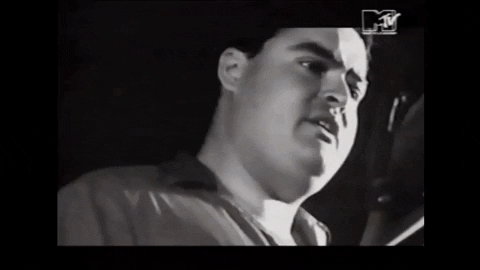
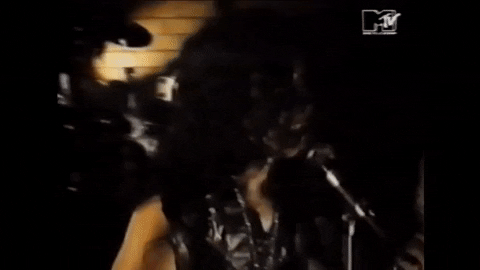

The sunshine of dawn will born
Rain falls at the end of the night
Wetting your face, your soul
Speed is your way of life
Soon you'll meet your face
Reflected on the wet asphalt
The red of your blood, your blood!!!!
The lights end everywhere
You feel your soul burning in pain
Now you see the face of death
Calling you for a silent kiss...
Something strange being inside of me
Am I awakening to a new life?
I can't stand this agony
Somebody please hear my screeches
From the silence
𝔖𝔞𝔯𝔠ó𝔣𝔞𝔤𝔬 - 𝔖𝔠𝔯𝔢𝔢𝔠𝔥𝔢𝔰 𝔣𝔯𝔬𝔪 𝔱𝔥𝔢 𝔖𝔦𝔩𝔢𝔫𝔠𝔢
#Sarcófago#The Laws of Scourge era#the laws of scourge#Screeches from the Silence#Release date: August 1991#90's#90s#1991#Wagner Lamounier#Gerald Minelli#Fábio Jhasko#Lucio Olliver#Genre: Black/Thrash/Death Metal#Themes: Death Lust Alcohol Satan Anti-Christianity Blasphemy Depression Suicide#Brazil#mtv#headbangers ball#metal#death#death metal#classic
35 notes
·
View notes
Photo

𝔖𝔞𝔯𝔠ó𝔣𝔞𝔤𝔬
#Sarcófago#The Laws of Scourge#The Laws of Scourge era#90's#Wagner Lamounier#Gerald Minelli#Fábio Jhasko#Lucio Olliver
38 notes
·
View notes